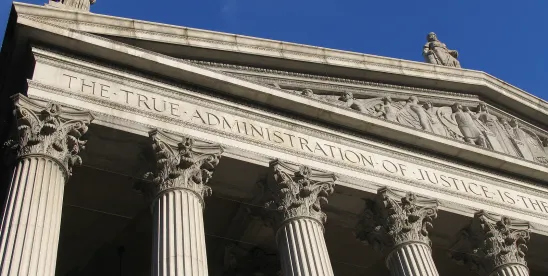In June 2024, the U.S. Supreme Court issued its opinion in Loper Bright Enterprises v. Raimondo, No. 22-451, and Relentless, Inc. v. Dep’t of Commerce (U.S. June 28, 2024), overruling the 40-year-old practice of “Chevron deference” – judicial deference to administrative agency interpretation of statutes that the agency administers. Since then, commentators have characterized this decision as likely to reshape administrative law generally and environmental law specifically. As a matter of administrative law doctrine, that is surely true. But with the benefit of a few months’ reflection, Loper Bright may not change the practice of environmental law as some might have either hoped or feared.
Under Chevron U.S.A. Inc. v. Natural Resources Defense Council, 467 U.S. 837 (1984), the Supreme Court created a two-pronged inquiry to evaluate whether a federal agency acted within its scope of authority when issuing a regulation or otherwise acting in a way that turns on an interpretation of the agency’s authorizing statute. First, a reviewing court would consider whether the statute was silent or ambiguous on the question. Then, if the statute was silent or ambiguous and therefore required interpretation, the court would consider whether the agency’s interpretation was a reasonable construction of the statute. Typically, courts would defer to the agency charged by Congress with implementing the statute at issue, not substituting the court’s judgment for that of the agency so long as the agency’s interpretation was plausible.
The demise of “Chevron deference” ends the presumption on the second prong of the inquiry that federal agency statutory interpretations are correct. Loper Bright requires courts to “exercise independent judgment” in interpreting statutes and directs them to arrive at the “best interpretation” of the statute and not accept merely plausible interpretations. However, the Court has not completely leveled the playing field, as it notes that agency interpretations of statutes may still be given “due respect” and “help inform” a court’s decision. Loper Bright also focuses on the judiciary’s primacy in interpreting the law: it does not upset agencies’ role as a fact finder, noting that under the Administrative Procedure Act, judicial review of agency policymaking and factfinding is deferential.1 Loper Bright does not upset deference to an agency’s interpretations of its own regulations under Auer v. Robbins, 519 U.S. 452 (1997).
While Loper Bright changes the rules on one crucial point – the degree of deference given to federal agencies’ interpretations of federal statutes – a large portion of interactions and disputes with environmental agencies may not involve such statutory interpretations. Loper Bright might not have a significant impact on a dispute with an agency over the application of a regulation, the terms of a permit, or an agency’s factual determinations if the dispute does not also involve statutory interpretation (though it might encourage parties to be more diligent or creative in finding one). Further, state agencies implement many major environmental statutes under state statutes and regulations, with the degree of judicial deference due those agencies being a matter of state, not federal, law.
If a federal agency decision requires the agency to interpret the meaning of the federal statute it is implementing, then Loper Bright may come into play. If the language is susceptible to controversy and no courts have resolved that controversy, then the agency has no choice but to pick a meaning before acting. Parties dealing with or practicing before agencies will have to contend with that agency-chosen meaning. Only if those parties are disappointed can they challenge the agency interpretation in court and argue that it was not the “best” interpretation. Once in federal court, the federal agency’s interpretation may still be given “due respect,” even if it will not benefit from Chevron deference. As a practical matter, for most agency interactions, the agency’s interpretation of its own statutes, often reflected in regulations and guidance, will probably govern.
Without Chevron deference, it will be more difficult for agencies to promulgate regulations that go beyond the specific authorizing language in statutes. Of course, that is the motivating objective of the opinion—limit policy making by federal agencies when it is not specifically and properly authorized by Congress. However, this is not necessarily “anti-regulation” because it applies equally to rulemaking that enlarges regulation and to rulemaking that cuts regulation back. Those who believe that regulations are not stringent enough and those who oppose regulatory rollbacks can both argue that a challenged regulation or regulatory repeal deserve no deference. Even under decades of Chevron deference, environmental groups successfully challenged EPA’s regulations as too weak, while the courts rejected some recent efforts to reverse regulations. Under Loper Bright, decreased judicial deference to agencies could make it more difficult for new administrations to reinterpret statutes to decrease or to increase regulatory burdens.
As a result, Loper Bright might have less of an impact on many aspects of the practice of environmental law than some anticipate.
1 See Huntsman Petrochemical LLC v. EPA, No. 23-1045 (D.C. Cir. Aug. 13, 2024) (affording “extreme degree of deference” to EPA’s evaluation of scientific data within its area of expertise and finding calculation not unreasonable or arbitrary).





 />i
/>i

